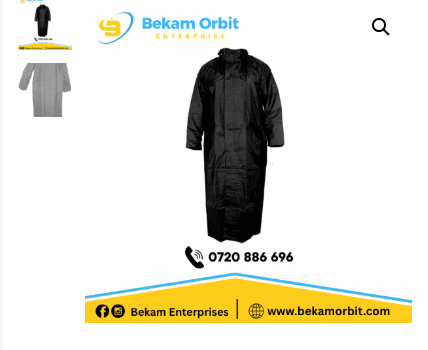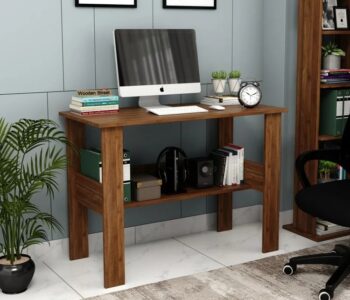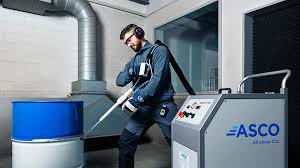 Business
Business
Are Raincoats Durable Enough to Handle Tough Industrial Work?
- by Kevin Smith
Industrial work environments—construction sites, manufacturing plants, mining zones, and logistics hubs—aren’t just rough; they are relentless. Workers face unpredictable weather, heavy machinery, exposure to chemicals, and extended hours outdoors. In such settings, staying dry isn’t a matter of comfort—it’s a matter of safety and efficiency.
This brings us to an often-overlooked piece of protective equipment: the raincoat. But the question remains—are raincoats built for consumer use durable enough to stand up to the harsh demands of industrial applications?
Understanding the Function of Industrial Raincoats
At its core, a raincoat is meant to protect the body from water exposure. However, in industrial contexts, this basic function expands significantly. Workers need rainwear that can:
- Withstand heavy downpours without leaking or tearing
- Handle constant abrasion from tools, gear, and machinery
- Provide flexibility without sacrificing strength
- Resist oils, greases, and potentially hazardous substances
- Stay secure during movement, climbing, or lifting
Not all raincoats are created equal. Standard retail rainwear often fails to provide these performance capabilities, making specialised industrial-grade raincoats a necessity.
What Sets Industrial-Grade Raincoats Apart?
Unlike fashion or casual rainwear, industrial raincoats are engineered for endurance. Here’s what distinguishes them:
1. Heavy-Duty Materials
Industrial raincoats are often made from materials like PVC-coated polyester, polyurethane blends, or multilayered synthetic fabrics. These materials are not only waterproof but also tear-resistant and resistant to punctures and abrasions.
2. Reinforced Seams
In rugged environments, the weakest point in a garment is often the seam. Industrial raincoats feature welded or double-stitched seams with additional sealants to prevent water ingress under pressure.
3. High-Visibility Design
In many sectors—especially construction and roadwork—visibility is a safety requirement. Industrial raincoats often include reflective stripes or bright colors like neon yellow or orange, helping workers remain visible even in heavy rain or fog.
4. Chemical Resistance
Many industries expose workers to oils, chemicals, or solvents. A quality raincoat for these conditions is tested for chemical resistance to ensure that the material won’t degrade or become permeable when exposed to hazardous substances.
5. Functional Fit and Features
Features such as adjustable hoods, storm flaps, multiple secure pockets, and ventilation points make industrial raincoats not just protective but also practical for long work hours.
Common Applications in the Field
Raincoats are used across a range of sectors. Let’s explore a few common applications:
- Construction Workers: For those working on building sites, especially in open areas, industrial raincoats provide full-body coverage against sudden downpours.
- Logistics and Warehousing: Workers in loading bays or outdoor logistics areas use raincoats to maintain comfort and focus during stormy conditions.
- Mining and Quarrying: In environments where exposure to mud, chemicals, and abrasive materials is routine, a raincoat acts as a vital barrier layer.
- Agricultural Sector: Field workers benefit from raincoats that keep them dry while allowing ease of movement during harvesting or animal care.
When a Raincoat Isn’t Enough
In some cases, workers need more than just a jacket. That’s where full rain suits—featuring waterproof overalls and rain trousers—come in. These offer additional protection for the lower body, particularly in jobs where kneeling or ground contact is common.
Additionally, pairing raincoats with other safety wear, such as gumboots, gloves, or safety shoes, enhances overall protection and reduces accident risk. Many suppliers provide integrated solutions where rain gear is part of a wider personal protective equipment (PPE) kit tailored for industrial use.
Maintenance: The Key to Durability
Even the best raincoat will degrade over time if not cared for properly. To extend lifespan:
- Clean after exposure to chemicals or mud
- Hang to dry rather than stuffing into lockers or bags
- Inspect seams and closures regularly for wear and tear
- Store in cool, dry conditions to prevent mould and mildew
Proper maintenance not only preserves functionality but also ensures the garment continues to meet safety standards over time.
Choosing the Right Raincoat for Your Industry
When shopping for industrial raincoats, here are key questions to consider:
- Is it certified for workplace safety standards in your country or region?
- Does the material match your specific exposure risks (e.g., chemicals, sharp surfaces)?
- Is the sizing appropriate for layering over other safety gear?
- Is it compatible with other PPE used in your environment?
Final Thoughts: Built for the Storm
So, are raincoats durable enough for heavy industrial use? The answer depends entirely on the type of raincoat. Retail or fashion-grade coats are not designed for the grit and pressure of industrial life. But specialised, purpose-built raincoats—crafted with tough materials, safety features, and long-term wear in mind—are.
Investing in high-quality industrial rainwear isn’t just about staying dry—it’s about safety, comfort, and maintaining productivity, even when the skies turn against you.









